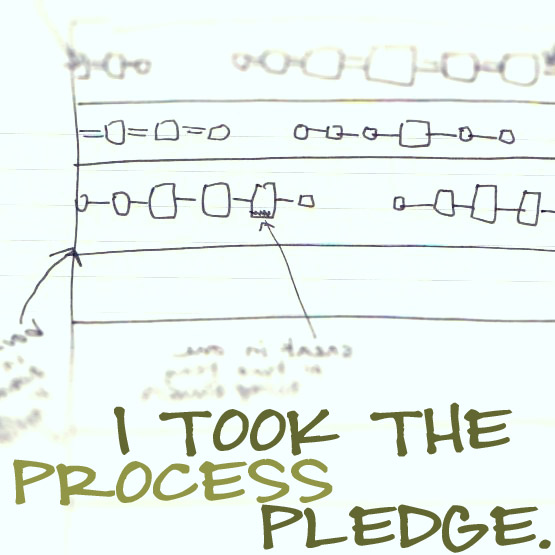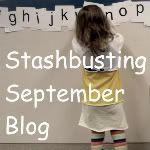Today I stumbled upon an interesting conversation going around the blogosphere about what "modern quilting" is, and about sharing design process more in our blogs. Specifically, I've been thinking about R0ssie's post on mutant quilting, in part in response to Naptime Quilter's post "throwback - a digression," and R0ssie's process pledge.
What does it mean to be a quilter? A "modern" quilter? What route did you take into quilting?
Marit brought up cooking, and that really resonated with me. I think the fiber arts, like cooking, can be approached in a variety of ways. With cooking, you can learn in the French tradition, Julia Child style, in a strict classroom with a fussy guy yelling at you to cut your veggies precisely in various shapes whose acceptable dimensions are defined down to the millimeter, and you can learn precisely how to make each of the "mother sauces" from which all other sauces are made. Or you can travel the world (in person, or via books, restaurants, or the internet) and absorb the traditional cooking methods and flavors of Morocco, Greece, Russia, Spain and Peru. You can be an avid coupon cutter, priding yourself on getting $50 worth of groceries for $5.23, and eat whatever it is that is on sale. You can learn a set of techniques, and then pull stuff out of the cupboard and throw it together using those techniques. You can cook strictly from recipes, or be inspired by recipes, finding flavor combinations and cooking methods, or simply modifying dishes to suit.
I think knitting and quilting are very similar: you can follow a pattern, using a prescribed yarn or fabric collection, for a pre-determined outcome. You can substitute your own "ingredients" into a traditional or commercial pattern. You can draw inspiration from "recipes" that "sound good" (patterns that look intriguing, blog posts that get your creative juices flowing, books, museum exhibits, Flickr, etc). Or you can start with a familiar "flavor" made up of a favorite color combination, and try a new technique! The permutations are endless.
What does this have to do with what "modern quilting" is or sharing the quilting process? For me, it's all about approach, and how that influences the process and outcome. There was some discussion of taxonomy, and how to classify different sorts of quilts, for example a quilt with lots of white and bright colors. I think there's more to it than that, though; it's not just about what colors and lines are in the quilt, but also how the quilt came into being. Did the quilter see a quilt she/he loved on someone's blog, buy the pattern, and use the recommended fabrics? Or did the quilter putz around with a stack of fabrics, do some improvisational piecing, and play around on the design wall? Or maybe she saw a great photograph someplace, loved the color combination, and sat down with a sketchpad to capture the "feel" or palette of the photo in a quilt. Any of these processes could give rise to a quilt with lots of white and bright colors, but I think that even if you had three identical quilts made via these three routes, each would be a different kind of quilting. Does that make each of the quilts taxonomically distinct, or are is it only the quilters (and their creative processes) that are different?
I don't know.
What I do know is that a Chef, a home cook, my next-door neighbor and a foodie can each make me dinner. And, different as they will be, I will enjoy them all.
~Phosphorelated
7 years ago




I'm not a quilter, so maybe what I say doesn't count. Still, reading this (and the other posts) all I could think is that you feel like the quilters of yore to me. You like doing it, it's an outlet for you, and you do what pleases you, expressing yourself through what I guess is now known as "fabric art." How important are labels? Quilting is an old practice, engaged in for both necessity and preference. Clearly, you could stay warm at night without your quilts. So could those you make them for. Even "traditional" quilters could have kept people warm without expressing themselves through their work. They couldn't have expressed themselves--or shown off to others--without quilting, though. People's esthetic their "eye" is always informed by their life at the time: what they've been exposed to, taught, learned, thought about, dreamed about, have on hand or can get. So, what's different? Sorry to be ignorant!
ReplyDeleteThe cooking analogy is a good one. I am cook and food writer in addition to a quilter, so it really hits me. And truthfully, the way I cook isn't much different that the way I approach quilting. I take an idea, an inspiration, a concept, or a technique, and set to it - more or less making it up as I go. But I do think that I am only truly capable of doing this well because I have a solid foundation of technique and a certain amount of expertise.
ReplyDelete